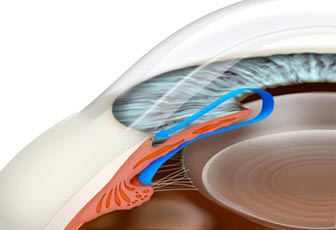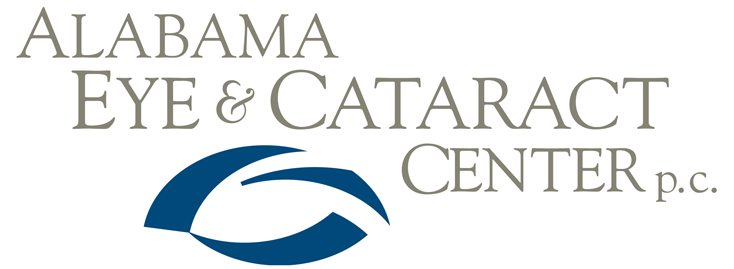At Alabama Eye & Cataract Center, P.C. our ophthalmologists and eye surgeons provide examination, diagnosis and treatment of glaucoma. Glaucoma is an eye problem that can damage the optic nerve and cause loss of vision. Most serious eye problems typically produce some symptoms that make patients uncomfortable or disturb their vision. However, the most common type of glaucoma, called Primary Open Angle Glaucoma, begins without any symptoms or obvious loss of vision. It is critical to diagnose and treat glaucoma as early as possible through regular eye examinations, in order to prevent vision loss as with early detection and diagnosis. In the vast majority of cases, glaucoma can be treated and controlled without progressive vision loss.
During your examination we may perform a number of tests in order to make the most accurate diagnosis of glaucoma. These include Tonometry to measure eye pressure, Ophthalmoscopy to carefully examine the optic nerve, Visual Field testing to evaluate your peripheral vision to determine if there is any damage from glaucoma, Gonioscopy to directly observe the health and condition of the angle of your eye where the iris inserts and eye fluid drains out of the eye, OCT or “optical coherence tomography” digital imaging of the optic nerve and retina and Pachymetry which measures corneal thickness. Corneal thickness can alter the accuracy of the measurement of intraocular pressure (IOP). Patients with thin corneas may be inherently more likely to develop glaucoma.
Depending on your general health, eye health and family history, a number of factors may increase your likelihood of developing glaucoma. An increased risk of glaucoma occurs when you have higher than normal intraocular pressure (IOP). Patients over the age of 40, and especially above 60, should be routinely evaluated for glaucoma. Glaucoma is prevalent in the African-American and Hispanic population. Anyone above 60 years of age, being extremely nearsighted, having high blood pressure or diabetes and especially anyone who has a family history of glaucoma is at considerably greater risk. Prolonged use of oral contraceptive birth control pills, as well as the early onset of menopause, may increase glaucoma risk in women. Anyone suffering from sleep apnea needs to be carefully evaluated, as this condition significantly increases glaucoma risk. If you have had a history of eye trauma, such as a sports injury or car accident, or if you have been treated for asthma or for prolonged periods of time with steroid inhalers, or have a corneal thickness less than 0.5mm, you too might be at greater risk of developing glaucoma. The two main types of glaucoma are Primary Open Angle Glaucoma (POAG), and Angle Closure Glaucoma. Patients with Primary Open Angle Glaucoma usually have an increase in Intraocular Pressure (IOP) upon routine measurement, called Tonometry.

Acute Angle Closure Glaucoma is one of the only types of glaucoma that causes obvious symptoms, which include: pain, light sensitivity, redness, blurry vision, colored halos around lights and nausea or vomiting and this is a MEDICAL EMERGENCY. If these symptoms occur please call Alabama Eye & Cataract Center, P.C. at 205-930-0930 for an immediate appointment.

